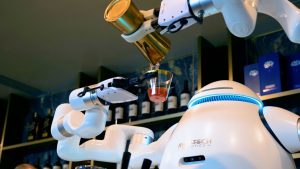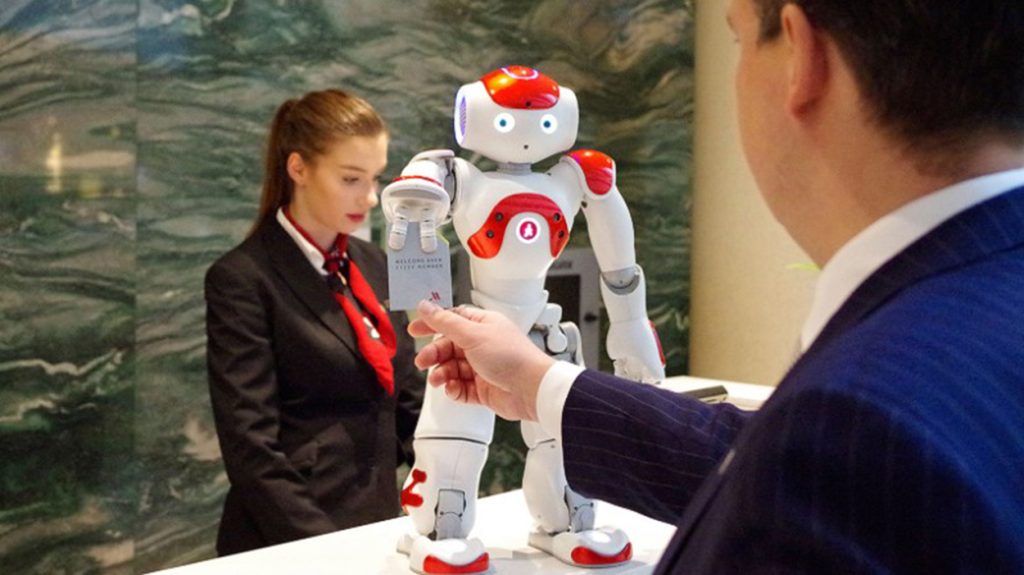Understanding Robots
Although most of us have a concept of a robot, it can be more difficult to clearly define what ‘robot’ means. Effectively, a robot is a machine designed to automatically perform specific tasks accurately. This could include physical tasks, such as part assembly in a factory, or text or speech-related tasks.
In terms of appearance, while you may immediately think of a human-like android, robots can take many different forms in reality. They can be completely autonomous or semi-autonomous, operating with some human assistance. Modern robots use technology ranging from collision detection to speech recognition and artificial intelligence.
For those in the travel industry, AI is perhaps the most exciting robot-related technology because it can facilitate machine learning and the performance of more complex tasks, which typically require human cognitive function. Put simply, AI is the ability of a machine to mimic this kind of cognitive ability.
Definitions outlining precisely what counts as artificial intelligence are somewhat fluid. Nevertheless, it is usually agreed that speech recognition, problem-solving, learning from human interactions, completely autonomous movement, and the demonstration of logic and reasoning all fall within this field.
Applications Within the Travel Industry

Robotic technology is rapidly gaining popularity within the travel industry, partly motivated by changing consumer habits concerning tourism. Customers are increasingly seeking self-service methods, making automation robots appeal to hotels, travel agents, and other businesses.
In terms of actually delivering excellent customer services, robots provide hospitality companies with several benefits. For example, chatbots can be made available 24/7, with almost instantaneous response times, which would be virtually impossible for human staff. They can also be used to reduce queue sizes.
8 Real-World Examples of Robots within the travel industry
Eight of the most prominent examples of robots being used in the travel industry are outlined below:
1. A Robot-Staffed Hotel
One of the most exciting examples of robots in the tourism and travel industry comes from Nagasaki in Japan. Here, the Henn-na Hotel is recognized as the world’s first robot-staffed hotel, with robots being used on the front desk, as customer information points, and for storage purposes, making use of voice, facial recognition, and AI technology.
2. Connie, Hilton’s Robot Concierge
Hilton has deployed robot technology in the form of Connie, an artificially intelligent concierge developed in collaboration with IBM. Connie can interact with visitors, using speech recognition technology to respond to their queries. It also learns from each interaction, meaning the more it is used, its responses will improve.
3. Travelmate: A Robotic Suitcase

Among the most innovative uses of robots within the travel industry so far is Travelmate, a robotic suitcase, which removes the hassle of travel. The suitcase can follow its owner around autonomously, utilizing collision detection technology and 360-degree turning capabilities, removing the need to carry the case.
4. Robot Assistants for Hotels and Airports
Hotels and airports are deploying robotic assistants to fundamentally change the customer experience. Tourists can ask these assistants questions, find out information and even get them to perform key tasks, like room service. Many of these robotic assistants can also understand and communicate in multiple languages.
5. Robots in Travel Agencies
Another area where robots are being experimented with is within travel agencies, especially to entertain customers at busy times. Used in this way, the robots can gather important information about what the customer is looking for and then feed it back to a travel agent, improving efficiency.
6. Chatbots for Flight or Hotel Bookings
In much the same way online bookings revolutionized tourism, chatbots have started to do the same. One particularly good example of this is the SnatchBot Booking Travel Template, which uses AI to guide customers through the booking process, asking intelligent questions along the way.
7. Security Robots for Airports
With a constant need to improve airport security, robots are being deployed in some locations to assist human security staff. For instance, Knightscope robots are being used in some airports to detect concealed weapons and other hidden items that are not permitted on flights.
8. Other Examples of Robots in the Travel Industry
Finally, there are a variety of other uses for robots within the travel industry. These include robot luggage porters and butlers, which can navigate hotels and provide valuable services for customers, and robots capable of handling check-ins and check-outs, making for a much swifter experience.
